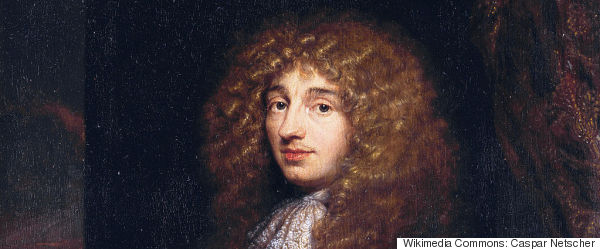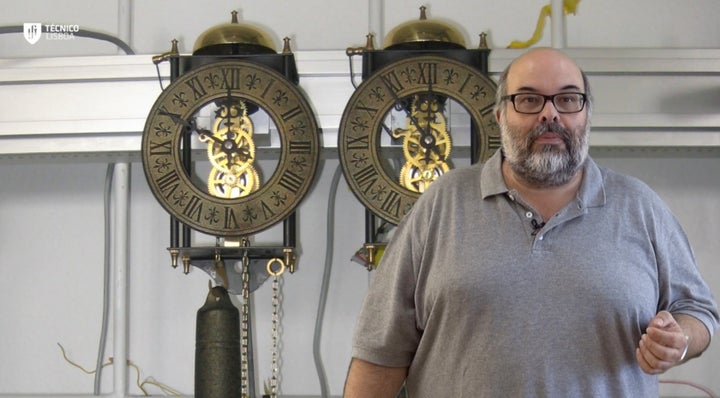Well, it's about time!
After more than three centuries, scientists say they have figured out why pendulum clocks hung on the same wall tend to sync up--with one clock's pendulum swinging to the left just as the other swings right.
The strange phenomenon was first observed in 1665 by Christiaan Huygens (1629-1695), according to LiveScience. No matter how the clocks started, the Dutch scientist noticed that within about 30 minutes their pendulums wound up swinging in precisely opposite directions.
(Story continues below image.)

Christiaan Huygens Dutch mathematician and scientist.
Over the years various explanations were offered, including the idea that the pendulums sync up as a result of tiny air currents they create, AFP reported.
But according to a new paper published on July 23 in the journal Scientific Reports--which builds on earlier research, including a study published in 2002--this is the correct explanation: sound waves generated by the movement of one pendulum travel through the wall to perturb the movement of the other until the pendulums are moving in opposition.
As Dr. Henrique M. Oliveira, a University of Lisbon mathematician and one of the study's co-authors, told The Huffington Post in an email, "The two clocks interact, giving two 'kicks,' one in one direction and another one in the opposite direction... Only when the clocks are at phase opposition the effects of the perturbation cancel" and the pendulums swing in opposite directions.
(Story continues below image.)

Dr. Luis Melo with the pendulum clocks used to confirm the mathematical model of the pendulums' synchronization.
Oliveira said he and study co-author Dr. Luis V. Melo (pictured above), a physicist at the university, reached their conclusion after developing a complex mathematical model and then confirming it experimentally with a pair of clocks hung on an aluminum rail.
The finding shows that "very small interactions can add up and in the end synchronize very large systems," Oliveira said. The same basic principle is seen in other disciplines, he said, including economics, electronics, and biology--for instance, when cells in the heart sync up to create the heartbeat or brain cells sync up to trigger seizures in people with epilepsy.
Huygens is credited with creating the first pendulum clock in 1656, according to AFP. At the time it was the most accurate timepiece ever made, gaining or losing less than one minute a day.
The most accurate clocks today are a bit more accurate. As Vice reported last April, one developed recently by physicists from the National Institute of Standards and Technology and the University of Colorado is accurate to within one second every 15 billion years.
Tick-tock!
